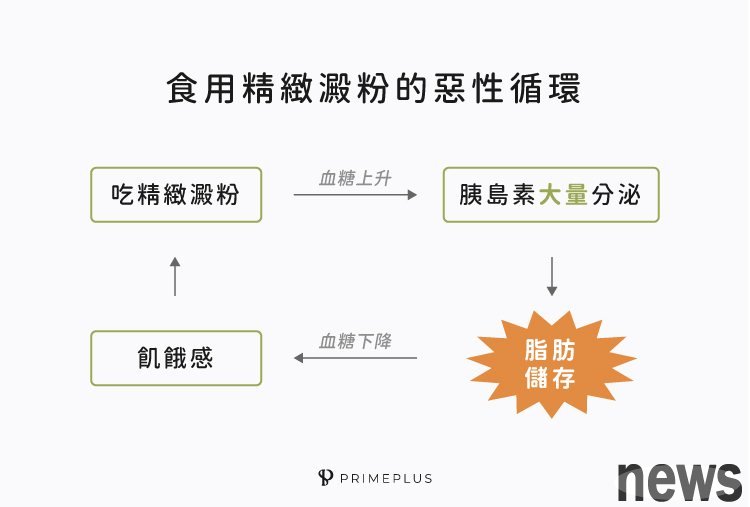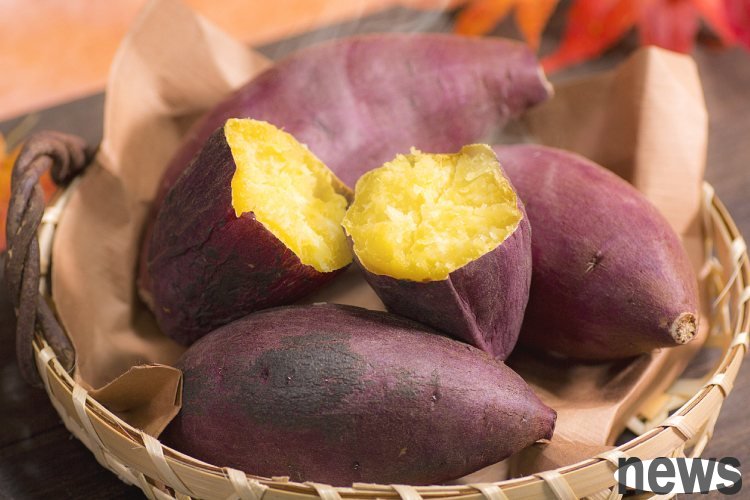Modern people are becoming more and more concerned about health, and many people try to reduce the fat in their diet, such as reducing the frequency of eating fried food, removing oil from soup, eating lean meat as much as possible without fat meat;...

Modern people are becoming more and more concerned about health, and many people try to reduce the fat in their diet, such as reducing the frequency of eating fried food, removing oil from soup, eating lean meat as much as possible without fat meat; etc. In recent years, more and more people have begun to realize that in addition to oils, powder should also be paid attention to! Carbohydrates (saccharides) are one of the three major nutrients, and their main function in the body is to provide energy. Among them, "salmon" is one of the main sources of carbohydrates. Foods rich in powder, such as rice, noodles, sweet potatoes, etc., are often used as staple foods in our meals. Under a balanced diet, about 50% of the hot amount of foods a day comes from powdered foods, but when eating excessive amounts of powdered, sugar, oil and other foods, the excess heat will be converted into fat and stored in the body. Therefore, some people start to dare not eat powdered foods, and are worried that they will become fat as soon as they eat powdered foods.
Different powders have different effects on the body. If you can choose the right food and eat it appropriately, you don't need to worry too much about your body's appearance. The following will introduce 3 related terms of powder and the impact of different powders on the body.
1. Refined Carbohydratesmainly refer to the type of powder with a higher degree of processing. When the grains are processed multiple times, the outer skin and germ are removed, and then ground into powder, the trace nutrients and dietary fibers in the food are easily lost during the production process, becoming only able to provide heat, but not much nutrient, such as cakes, noodles, soups, breads, dried baking, cakes, etc., which are all products of refined powder.

The powder in this type of food is better digested and absorbed, which will make blood sugar rise faster after eating. In order to maintain blood sugar stability, insulin is prone to excessive reaction and promote fat synthesis. At the same time, insulin is secreted too much, which reduces blood sugar too quickly, causing the body to mistakenly think of the lack of energy in the body, which increases the feeling of hunger and causes a vicious cycle.

Therefore, people who mainly eat refined powders in daily diet are prone to frequent hunger and eat too much food, resulting in continuous increase in body fat. This phenomenon is what most people often say about "eating powder is easy to gain weight", but in fact, "elaborated powder" is the hand that makes people fat!
Commonly added sugars in beverages, such as sugar, fructose, honey, etc., are not only high in heat, but also very easy to affect blood sugar and intraocular, just like refined powder!

mainly refers to unrefined grains or prototype foods rich in powder. These foods have low processing level and can retain more nutrients such as vitamin B group, vitamin E and minerals. Common foods such as: brown rice, red beans, pumpkin, taro, sweet potato, etc.
In addition to the more abundant nutrients such as vitamins and minerals, the unrefined powder also contains dietary fiber (1.5~2.5 kcal/g) and resistant powder (2.2 kcal/g). These two species have lower heat than ordinary powder (4 kcal/g), and have a foot feeling, but also have slow digestion, which is less likely to cause rapid increase in blood sugar and insulin to be secreted normally. Therefore, if you use appropriate amount of unrefined powder to replace refined powder as your staple food in your daily diet, you don’t have to worry too much about getting fat by eating stew.
3. Resistant Starchrefers to powder that is more resistant to the decomposition of human digestive enzymes. As mentioned above, powder is an important source of energy for us. Most powder can be digested and absorbed into the body after eating. However, due to its own structure and some characteristics, resistant powder becomes resistant to enzymes in the body and is not easy to digest and absorb. Some of them will become the nourishment of tract bacteria, promote the growth of good bacteria, and produce healthy short-link fatty acids. Therefore, resistant powder is also regarded as a dietary fiber in some countries.
*Dietary fiber: refers to carbohydrates (saccharides) and lignin that cannot be digested by human kidney enzymes. It is mainly composed of non-salmonic polysaccharides contained in plants, and other substances such as oligosaccharides, resistant powders and polyglucose. Because they are not digested by humans and are healthy, they are also considered as broad-based dietary fibers.
Currently, resistant powders are divided into 5 major categories, divided into RS1~RS5. RS1 and RS2 are naturally resistant powders, which are common in unrefined powdered foods, such as: whole grains, red beans, corn, green bananas (raw bananas), etc. RS3~RS5 is the powder produced during cooking/processing, or the powder formed through chemical repair. Common sources include: cold rice, potatoes or processed foods, digestible fermentation, etc.
I often hear people say that "eating cold food is better for the body", because cold food contains more resistant powder. During the cooking process, the stew will undergo gelatinization, which will absorb water and expand, be swollen, and become easily decomposed by the enzymes in the body, making the rice soft and delicious. However, during the stew, the moisture will slowly lose, causing the aging of the powder (retrogradation of the coagulation effect) to cause some stew structures to change and become denser, producing resistant stew powder, making the enzymes in the body difficult to decompose, and the taste of the rice will also become harder. Related research points out that temperature and time will affect the production of resistant powder. Whether white rice is left at room temperature or refrigerated, the resistant powder inside will be more than just cooked..

The advantages of resistant powder and dietary fiber
resistant powder in promoting health are similar to dietary fiber, which mainly have the following two points:
1. Blood sugar regulation and weight management have the characteristics of foot feeling, lower heat and difficult to digest. It can reduce the heat in the body and prolong the feeling of foot feeling after meals. It can also make the blood sugar fluctuation after consumption, achieve the effect of regulating intraocular secretion, reducing fat formation and reducing heat intake. (Note: Eating any food should be subject to the appropriate principle. Eating too much will still make you gain weight.)
2. Promote the health of the kidneys. Because resistance powder is difficult to digest in the body, it can be used by beneficial bacteria in the kidneys, so that it can be used as a probiotic to promote the growth of good bacteria, and is decomposed to produce short-link fatty acids and adjust the pH value in the kidneys. It is also used as a source of energy for cells to use, and at the same time promotes peristalsis in the kidneys, makes defecation smooth, and improves kidney health!
After having a basic understanding of refined powder, unrefined powder and resistant powder, I believe everyone has learned that eating incorrect powder and excessive consumption will lead to obesity; as long as you choose rinse powder correctly and eat appropriately, you will not be afraid of dietary problems affecting your physical condition and health!